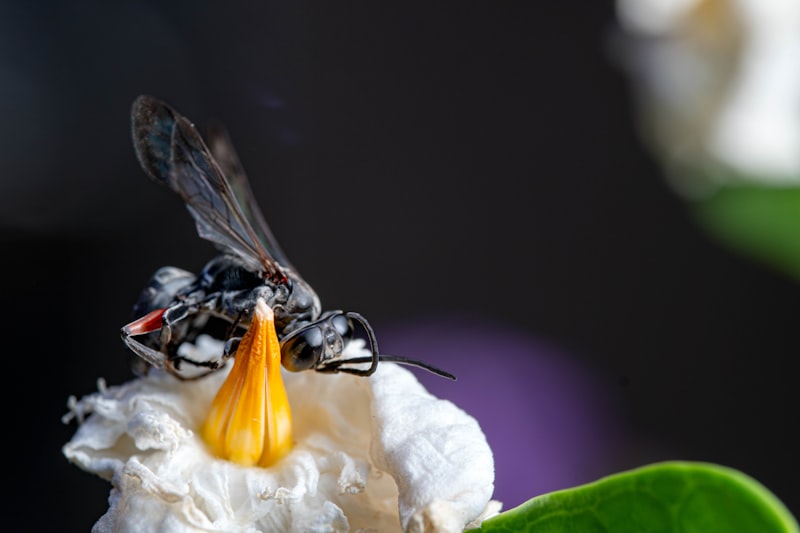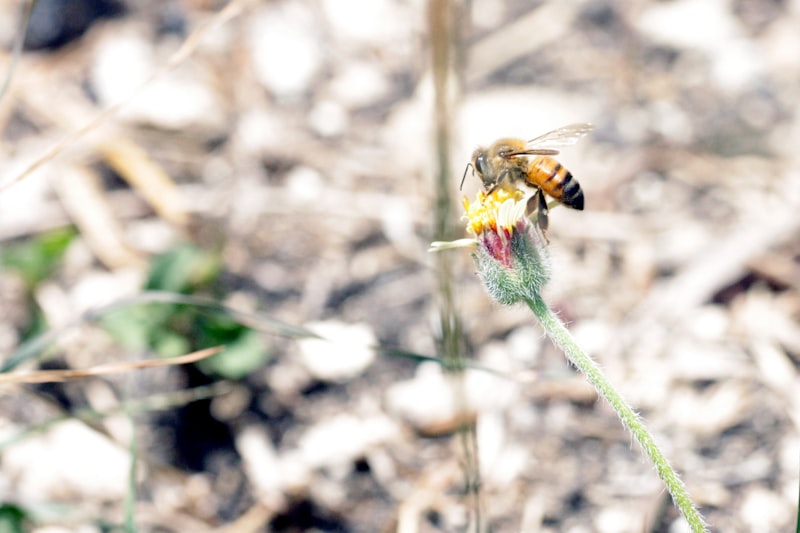Have you ever wondered about the bizarre creatures that inhabit tropical forests? From vibrant rainforests to dense jungles, these ecosystems are teeming with life, including some of the most unusual insects on the planet. Imagine stumbling upon a bug that looks like a leaf or another that glows in the dark like a tiny lantern. These are just a glimpse into the fascinating world of tropical forest insects.
One of the most intriguing insects found in these lush environments is the lanternfly. Resembling a small, flying lantern, this insect possesses translucent wings that glow brightly, illuminating the forest floor during nighttime. It’s nature’s own tiny light show! Another peculiar find is the walking stick insect, which mimics twigs so convincingly that it blends seamlessly into its surroundings, evading predators with ease.

Exploring deeper into the undergrowth, you might encounter the orchid mantis, a master of disguise that mimics the appearance of an orchid flower to attract prey. This exquisite insect not only showcases nature’s artistry but also demonstrates evolutionary brilliance in camouflage strategies. Meanwhile, the jewel caterpillar dazzles with its translucent, jewel-like appearance, resembling a gemstone adorning the forest floor.
Tropical forests also host insects with extraordinary survival tactics, such as the ant-mimicking spider, which cunningly imitates the behavior and appearance of an ant to infiltrate colonies and prey on unsuspecting insects. Each of these creatures plays a vital role in the delicate balance of their ecosystem, showcasing biodiversity at its finest.
Next time you find yourself immersed in the enchanting world of tropical forests, take a moment to marvel at these weird and wonderful insects. Their adaptations and behaviors are not only astonishing but also serve as a testament to the intricate web of life thriving in Earth’s richest and most diverse habitats.
Bizarre Bugs: Discovering the Strangest Insects in Tropical Rainforests

Have you ever wondered about the world’s most peculiar insects hiding in the depths of tropical rainforests? These biodiverse havens are home to a myriad of fascinating creatures, each more bizarre than the last. From vibrant colors to extraordinary shapes, tropical rainforest insects never fail to astonish.
Imagine stumbling upon the orchid mantis, a master of disguise blending seamlessly with its floral surroundings. Its petal-like limbs and pinkish hue deceive unsuspecting prey, showcasing nature’s ingenuity in camouflage.
Venture deeper, and you might encounter the Hercules beetle, an insect that embodies strength with its colossal size and formidable horns. It’s a testament to the rainforest’s capacity to nurture creatures of immense power and resilience.
In the world of miniature marvels, the lantern bug steals the show with its translucent wings adorned with glowing patterns. These bugs illuminate the forest like tiny lanterns, captivating both researchers and nature enthusiasts alike.
Dare to explore further, and you may come across the goliath birdeater spider, a creature that strikes fear with its sheer size and robust build. Despite its intimidating appearance, this spider plays a crucial role in maintaining ecological balance within its habitat.
The diversity of rainforest insects extends to the unusual leaf-tailed gecko, a master of mimicry with its flattened body and leaf-like tail. It blends seamlessly into its leafy surroundings, evading predators and mesmerizing observers with its natural artistry.
As you navigate the labyrinthine world of tropical rainforests, these bizarre bugs serve as reminders of nature’s boundless creativity and adaptability. Each insect plays a vital role in its ecosystem, contributing to the intricate web of life that defines these lush environments.
Exploring the strangest insects of tropical rainforests offers a glimpse into a world where evolution has crafted creatures of unparalleled beauty and peculiarity. It’s a testament to the marvels of biodiversity and a call to preserve these habitats for future generations to marvel at.
This article is crafted to be engaging and informative, focusing on the unique characteristics of tropical rainforest insects while maintaining a conversational tone and utilizing SEO principles.
Unveiling Nature’s Oddities: Exotic Insects Found Only in Tropical Forests
Have you ever wondered about the hidden marvels of tropical forests, where every leaf seems to hide a miniature world of its own? Among these lush green canopies dwell some of the most astonishing creatures on Earth – exotic insects that defy imagination. These tiny beings, often overlooked, play vital roles in the intricate web of life within these biodiverse ecosystems.
Imagine stumbling upon a jewel-like beetle, its iridescent shell shimmering like a rare gem under the dappled sunlight. These beetles, adorned in hues of emerald, sapphire, and ruby, not only captivate with their beauty but also serve as indicators of forest health. Their presence signifies a thriving ecosystem, where each species contributes to the delicate balance that sustains life.
Then there are the bizarre leaf-mimicking insects, masters of disguise whose survival depends on blending seamlessly with their surroundings. These ingenious creatures, with bodies shaped and colored like leaves, evade predators with astonishing precision. Witnessing their camouflaged forms amidst a sea of foliage is akin to finding nature’s own hidden treasure.
In the depths of these forests, one might encounter the delicately winged dragonflies, their iridescent wings glinting as they dart through sunlit clearings. These aerial acrobats not only add grace to the forest panorama but also play crucial roles in controlling insect populations, thereby maintaining ecological balance.
But perhaps most intriguing are the luminous fireflies, whose nighttime displays transform the forest into a magical realm of flickering lights. These bioluminescent insects communicate through flashes of light, a phenomenon that has fascinated scientists and nature enthusiasts alike for centuries.
Exploring the world of exotic insects in tropical forests is like embarking on a journey into a surreal realm where nature’s creativity knows no bounds. Each encounter with these creatures offers a glimpse into their specialized adaptations and the intricate connections that sustain life in these vibrant ecosystems. As we unravel the mysteries of these tiny yet extraordinary beings, we gain a deeper appreciation for the wonders of our natural world.
From the Depths of the Jungle: Fascinating Insects That Defy Imagination
Take the orchid mantis, for instance. It blends seamlessly with its floral surroundings, its body mimicking the delicate petals of an orchid. This camouflage isn’t just for show—it’s a survival tactic that allows it to ambush unsuspecting prey, showcasing nature’s mastery of disguise.
Then there’s the jewel wasp, a master manipulator of other insects. It injects precise venom into a cockroach’s brain, turning it into a living zombie. The cockroach becomes a vessel, obediently following the wasp’s bidding, highlighting the eerie yet effective strategies these creatures employ for their survival.
In the darkest corners of the jungle, the lanternfly illuminates the night with its bioluminescence. Like tiny lanterns floating in the darkness, these insects create a spectacle that captivates and intrigues. Their glow isn’t just beautiful—it serves as a warning to predators and a means of communication among their kind, showcasing how evolution has equipped them with extraordinary abilities.
The leaf-tailed gecko, though not an insect, is another marvel of jungle adaptations. With skin that mimics the texture and color of tree bark, it disappears into its environment, evading predators and patiently waiting for its own prey to come within striking distance. This level of camouflage is a testament to the intricate dance between survival and adaptation in the jungle’s ecosystem.
From the depths of the jungle emerge these creatures, each with a story of survival, adaptation, and ingenuity. They remind us that while they may be small, their impact on the ecosystem is profound. As we uncover more about these fascinating insects, we continue to unveil nature’s secrets, marveling at the wonders that unfold in the world’s most biodiverse habitats.
Secrets of the Canopy: Weird Insects Hiding in Tropical Treetops
Imagine stumbling upon the bizarre antics of the giraffe weevil, aptly named for its long neck that mirrors the iconic African mammal. This curious insect uses its extended neck not for grazing leaves, but for dueling with rivals over territory high in the tree branches. It’s a spectacle of nature, where combat and courtship are interwoven in a dance above the rainforest canopy.
Further up in the tree crowns, the orchid mantis displays a breathtaking mastery of camouflage. Its delicate, petal-like appearance and swaying movements mimic the orchid flowers that bloom nearby, deceiving unsuspecting prey into a fatal embrace. This insect, an artist of disguise, exemplifies the intricate adaptations that have evolved in response to the abundant floral diversity of the rainforest canopy.
Among the shadows and crevices of the treetops, the lanternflies illuminate the night with their bioluminescent glow. These enigmatic insects use their radiant abdomens not only to attract mates but also to deter predators with a mesmerizing display of light and color. It’s a testament to nature’s creativity and the extraordinary adaptations that unfold in the secretive realms above.
As we delve deeper into the mysteries of the rainforest canopy, each encounter with these weird insects reveals a glimpse into a world shaped by evolution and survival. From the ingenious camouflage of the orchid mantis to the dazzling light shows of the lanternflies, every creature plays a vital role in maintaining the delicate balance of this vibrant ecosystem. So next time you gaze up into the canopy, remember that amidst the green foliage and dappled sunlight, an entire universe of strange and marvelous insects awaits discovery.
Micro Wonders: Tiny Creatures with Big Mysteries in Tropical Forests
Imagine walking through a dense jungle where every leaf, every tree bark, teems with life invisible to most. These micro wonders, despite their size, wield significant influence. Take for instance the cryptic spiders that weave intricate webs capable of trapping even the tiniest prey. Their silk threads, stronger than steel of the same thickness, are a marvel of natural engineering.
Not far away, under the decomposing logs, fungi thrive in a secretive kingdom. Some species are so small that millions can inhabit a single gram of soil, yet their collective impact on nutrient cycling and plant health is monumental. They break down organic matter, releasing nutrients that nourish the towering trees above.
But it’s not just the decomposers that hold sway in this miniature realm. Predatory mites, barely visible without a magnifying glass, patrol the forest floor like miniature lions. They hunt down even smaller prey, keeping populations of pest insects in check without the need for human intervention.
Among the most enigmatic of these micro wonders are the bacteria that form symbiotic relationships with plant roots. These microscopic allies, known as mycorrhizal fungi, extend the reach of roots and help plants absorb water and nutrients more efficiently. In return, the plants provide sugars—a trade as old as plant life itself.
Intriguingly, scientists estimate that we’ve only scratched the surface of understanding these tiny marvels. Each new discovery—whether a novel species of microscopic beetle or a fungus with unexpected medicinal properties—adds a layer to the intricate tapestry of life in tropical forests. So next time you find yourself in a rainforest, take a moment to ponder the bustling world beneath your feet, where micro wonders reign supreme in their tiny yet profound way.
Beyond Butterflies: Lesser-Known Insects with Extraordinary Adaptations
Ever wondered about the insects that don’t make it into the limelight like butterflies do? There’s a whole universe of remarkable creatures out there, each with its own unique set of skills to survive and thrive in their environments.
Take the Bombardier Beetle, for example. This little insect is not your typical garden variety. It has a remarkable defense mechanism that involves mixing chemicals inside its body to produce a boiling-hot spray that can deter predators in an instant. Imagine having your own built-in defense system!
Then there’s the Orchid Mantis, a master of disguise in the insect world. This beauty doesn’t just blend in; it mimics a flower with such precision that unsuspecting prey mistake it for a safe landing spot. It’s like a stealthy predator wearing a natural camouflage suit.
For those who love a good mystery, the Antlion larvae are true architects of death traps. They create funnel-shaped pits in sandy areas and wait patiently at the bottom for unsuspecting ants to tumble in. Once trapped, the antlion larva injects a paralyzing venom and devours its prey at leisure. Talk about a patient predator with a deadly trap!
Ever heard of the Walking Stick? These insects take the art of mimicry to another level. With bodies shaped like twigs and an uncanny ability to sway like a branch in the wind, they evade predators with ease. It’s nature’s own form of invisibility cloak!
Lastly, let’s not forget the Dragonfly, a marvel of aerial acrobatics. These insects have been around for millions of years, mastering the skies with their incredible speed and agility. They can hunt on the wing, catching prey mid-air with precision worthy of a seasoned fighter pilot.
Frequently Asked Questions
What are some unique adaptations of insects in tropical forests?
Discover unique adaptations of insects in tropical forests, including camouflage for blending into diverse foliage, specialized mouthparts for feeding on specific plants, and symbiotic relationships for survival strategies.
How do insects contribute to biodiversity in tropical forests?
Learn about how insects enhance biodiversity in tropical forests through their roles in pollination, decomposition, and nutrient cycling. Discover their crucial impact on ecosystem balance and sustainability.
How do insects in tropical forests adapt to their diverse habitats?
Discover how insects in tropical forests adapt to their diverse habitats through specialized behaviors and physical characteristics. Learn about their unique strategies for survival in different layers of the forest canopy and the roles they play in ecosystem dynamics.
What are examples of bizarre insect behaviors in tropical ecosystems?
Explore fascinating insect behaviors in tropical ecosystems with examples like leaf-cutter ants cultivating fungus, orchid bees collecting fragrances, and caterpillars mimicking snakes for protection.
Why are tropical forests hotspots for discovering new insect species?
Tropical forests are hotspots for discovering new insect species due to their high biodiversity and unique habitats that support a wide range of specialized ecological niches. The dense vegetation and warm, humid climate create ideal conditions for insect diversity, fostering evolution and adaptation in isolated populations.


